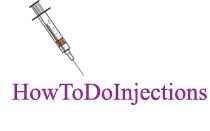Winstrol is worse and the reason is that it increase TGF-Beta, this is directly linked to androgenetic alopecia and hairloss.
The progression of androgenetic alopecia is closely related to androgen-inducible transforming growth factor (TGF)-β1 secretion by hair follicle dermal papilla cells (DPCs) in bald scalp. Physiological levels of androgen exposure were reported to ...

www.ncbi.nlm.nih.gov
(Induction of transforming growth factor-beta 1 by androgen is mediated by reactive oxygen species in hair follicle dermal papilla cells)
(The anabolic steroid stanozolol upregulates collagen synthesis through the action of transforming growth factor–β1)
Black Beard, this is a great contribution with respect to the primary mechanism by which stanozolol causes hair loss.
But I don't think we have the data to say whether drostanolone (Masteron) has weaker potency to cause hair loss than stanozolol (Winny).
Now check my math, Black Beard:
From Falanga [1], we can say that 5 μg/ml stanozolol ⇒ 140 mg/ml TGF-β; and from Shin [2], we can say that 10 μg/ml R1881 ⇒ 180 pg/mL. Shin's luciferase assay (Fig. 4) showed DHT > R1881 in luciferase activity (TGF-β1 promoter levels)... So DHT > R1881 (methyltrienolone) > stanozolol? I could make that argument (it's not exactly clear without knowing the precise dose-response of an equimolar concentration of R1881 vs. TGF-β, but it's if anything very close. I (or you) certainly CANNOT make the argument that stanozolol has any particular potency to cause hair loss by
this data, right?
What do we know about Masteron?
- Well it differs from DHT by the placement of a 2α-methyl group
- Its main metabolite is the 17-keto-oxidized 3α-hydroxy-reduced product, 3α-hydroxy-2α-methyl-5α-androstan-17-on ,which in comparison with T metabolism, is the 2α-methyl androsterone analog... we don't know its effect in scalp nor its nuclear receptor potencies (not in Houtman's supplementary data)
- Whereas stanozolol is an attenuated androgen, Masteron is quite androgenic, but certainly less virilizing in women than testosterone propionate... what about the data on hair loss in man? Unknown, to me at least. Have you seen this data?
... These facts all seem to point in different directions, i.e., it's certainly still unclear to me at least, where Masteron fits. Maybe I'm not as smart as you.
Can you explain why, aside from there being this sort of mechanistic data (dermal papilla cells, human dermal fibroblasts, etc.) on stanozolol, it ostensibly has
particular potency to cause hair loss versus drostanolone in your estimation?
To my eyes, and I've looked, I'm not seeing any data on Masteron's net potency to cause hair loss by androgen (we should include its metabolites and their potencies as well to be relevant to man) effects on the cellular redox state with respect to ROS homeostasis. So, again, to me at least, it's unclear whether it acts like DHT in this regard, or whether the 2α-methyl group dramatically attenuates the increase to TGF-β1. It's unclear whether its metabolites are more or less potent in their effects on ROS.
It just seems to me that, despite the very clear temptation to give a confident definitive answer here, there is a dearth of any particularized data on Masteron with respect to these mechanisms involved in hair loss...
References:
[1] Falanga, V., Greenberg, A. S., Zhou, L., Ochoa, S. M., Roberts, A. B., Falabella, A., & Yamaguchi, Y. (1998). Stimulation of Collagen Synthesis by the Anabolic Steroid Stanozolol. Journal of Investigative Dermatology, 111(6), 1193–1197. doi:10.1046/j.1523-1747.1998.00431.x
[2] Shin, H., Yoo, H. G., Inui, S., Itami, S., Kim, I. G., Cho, A.-R., … Won, C. H. (2013). Induction of transforming growth factor-beta 1 by androgen is mediated by reactive oxygen species in hair follicle dermal papilla cells. BMB Reports, 46(9), 460–464. doi:10.5483/bmbrep.2013.46.9.228





















































































